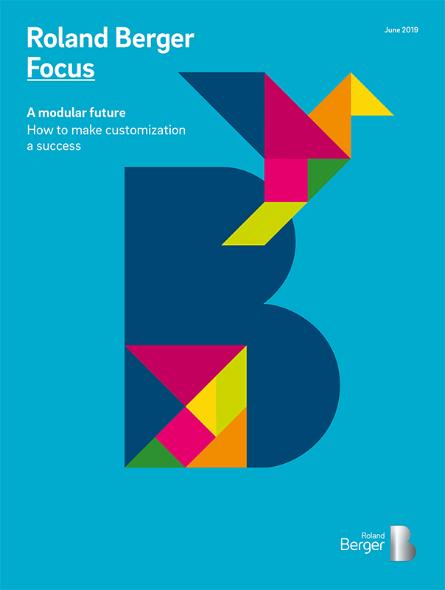Smart Modularization: Lucky to have a choice
![{[downloads[language].preview]}](https://www.rolandberger.com/publications/publication_image/Roland_Berger_473_Smart_Modularization_cover_download_preview-2.jpg)
Customization has become a trend in recent years. To be successful, companies must ask the right questions.


3D printing, Artificial Intelligence and robot automation : Mass adaptation has become a trend in recent years. Both multinational companies and Start-Ups are increasingly relying on products that are individually optimized or adapted. However, it is not only the right technology that is decisive, but also the right strategy. Two key questions therefore arise in this context: Is a given industry or business a good fit for customization? And how to successfully integrate customization without creating endless complexity? Roland Berger has investigated these questions in the study, "A modular future - how to make customization a success".

The answer to the first question depends on the company itself and the concrete needs of the customers. In the automotive industry, for example, customization is explicitly requested by the customer. This is also reflected in the latest developments on the subject. Mercedes is extending its range from just over 20 models in 2010 to more than 40 in 2020, with multiple configurations available for each, including fully electric versions. Its rival BMW has also cottoned on to the benefits of customization and is now taking an even more radical approach with the Mini Yours Customized model. Using 3D printing techniques, the BMW subsidiary enables customers to produce their own design for parts of the car's dashboard and cabin. But also in medicine and even in the film industry - where business models are being shaken up by YouTube, Netflix and vloggers - trends towards customization can be observed.
First of all, this is good news: customers typically like to have choices - this applies to the individualization of a car as well as to the composition of their lunch at a buffet. But while customers like choice, they often still opt for default options in configuration menus because they are overwhelmed or too busy to research further. Sectors and companies must therefore be aware of one thing: there's always a danger that consumers can be offered too much customization. But it is also clear that we have seen how a number of different consumer-oriented and B2B-oriented industries interfere in individualization and create real value.
How to successfully integrate customization without creating endless complexity? The answer to this second question depends on modularization. In the right environment, companies use the latest iteration of the concept: modularization 4.0. A principle that goes far beyond the mere implementation of new technologies, such as 3D printing in design and production. Modularization 4.0 builds on long-standing, proven principles of traditional modularization, such as platform sharing among carmakers. But it combines these with new technological tools and opportunities, thanks to digitalization and Industry 4.0, or the automation of machines.
In the study, "A modular future - how to make customization a success", Roland Berger identified five factors that are key to Modularization 4.0 succeeding across the supply chain. First: identify customer needs and prepare choice navigation. Second: understand the additional complexity and pinpoint its optimal level. Third: align the customer perspective with the operational perspective for product configuration. Fourth: develop a clear modularization strategy. And fifth: define a robust end-to-end operating model . Read more in the study.

![{[downloads[language].preview]}](https://www.rolandberger.com/publications/publication_image/Roland_Berger_473_Smart_Modularization_cover_download_preview-2.jpg)
Customization has become a trend in recent years. To be successful, companies must ask the right questions.